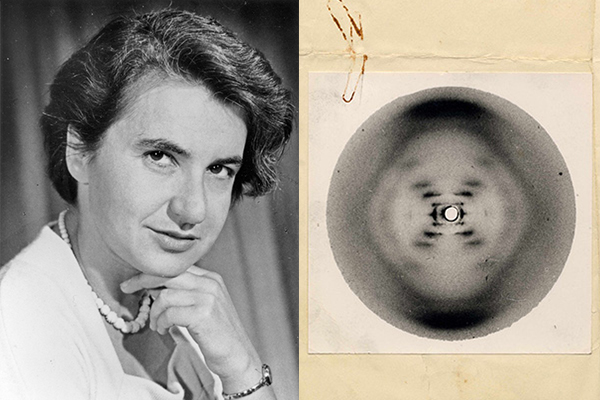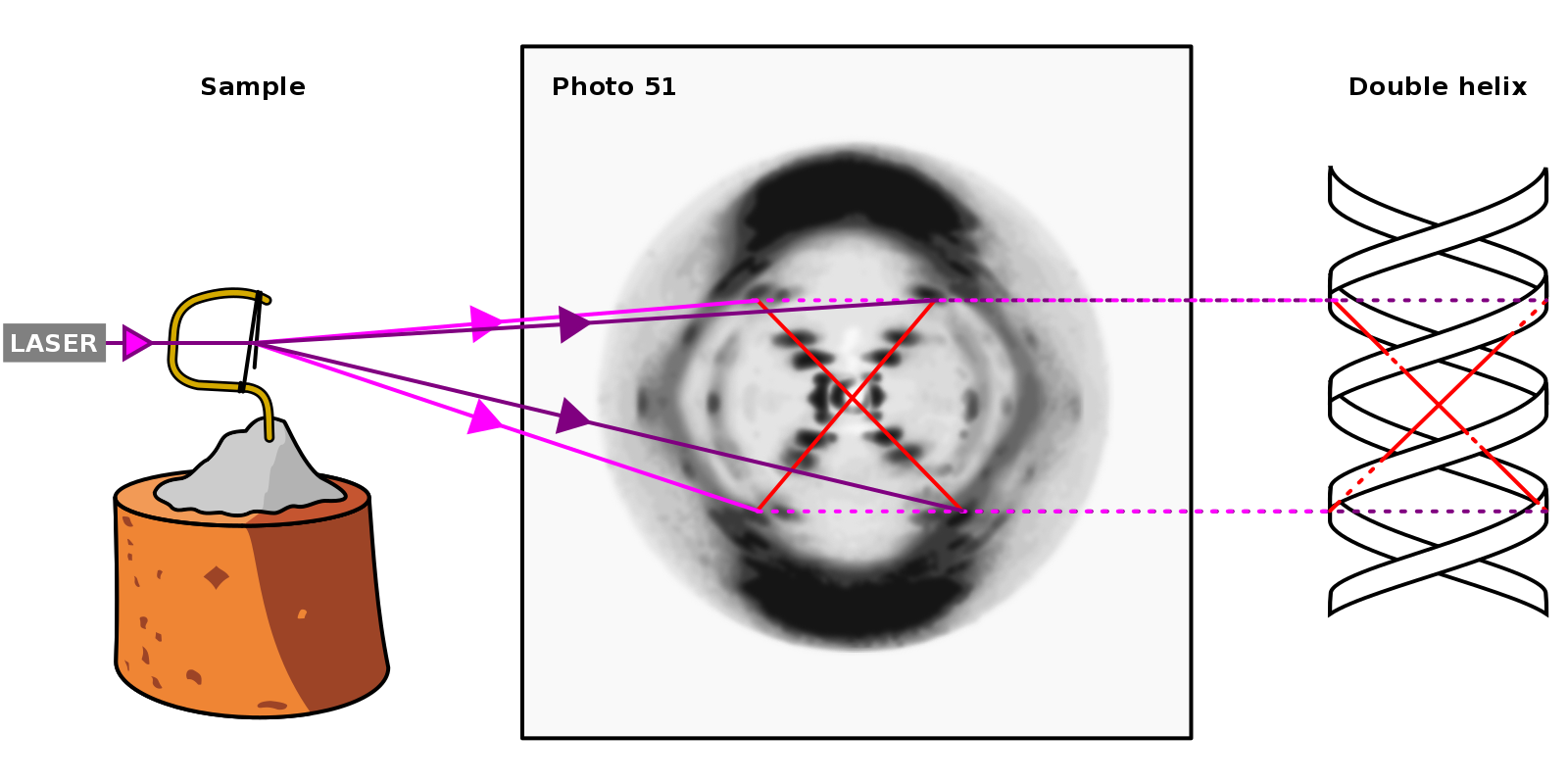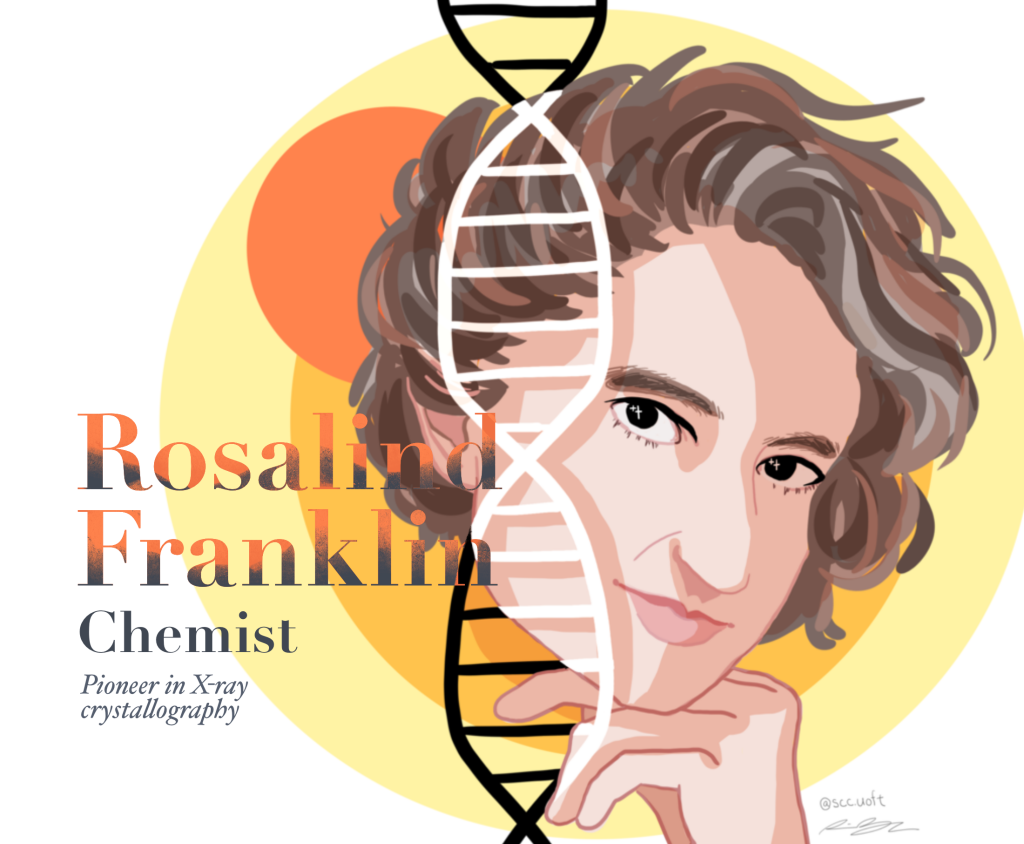By Frangiska Mylona,
It was 1953 when a groundbreaking discovery was made in biology. In fact, the DNA molecule’s structure, which stores genetic information, has finally been discovered. The double-stranded, anti-parallel shape of DNA constructed in three dimensions paved the way for modern biology.
This discovery won the Nobel Prize in Physiology or Medicine in 1962, by three scientists: James Watson, Francis Crick, and Maurice Wilkins. It was little known then that their discovery was influenced by another person’s work, specifically a woman known as Rosalind Elsie Franklin.
Rosalind Elsie Franklin was born in July 1920 in London. She was one of five children born to a wealthy Jewish family. From the early years of her life, she aspired to be a scientist despite the fact that it was uncommon for women to enter the field of science during that time. However, Rosalind attended St. Paul’s School for Girls, which prioritized careers, not marriage as the fate of its graduates.
At the age of fifteen, she passed the admissions exam for Newnham College, one of two women’s colleges at Cambridge University to study Chemistry. While some sources claim that Rosalind’s father objected to the decision and was persuaded by her aunt and mother to allow Rosalind to fulfill her dreams. However, other sources claim that he did not object despite his wish for his daughter to live a more traditional life.
In 1941, she was awarded a scholarship from Cambridge University to continue research programs and earn her PhD. However, with WWII still on, in 1942 she had to decide whether to be drafted for more traditional war work or pursue a PhD-oriented research job in a field relevant to wartime needs. She chose the latter, and began work with the recently organized British Coal Utilisation Research Association. She investigated the structures of carbon and coal to create better masks for soldiers. Eventually, in 1945, she completed her PhD.
Afterward, she attended the State Chemical Laboratory in Paris (from 1947 to 1950) where she studied X-ray diffraction techniques. At that time one of her friends, Charles Coulson, a theoretical chemist, suggested she look into X-ray diffraction studies of large biological molecules. In 1950 she was awarded a three-year Turner and Newall Fellowship to work in John T. Randall’s Biophysics Unit at King’s
College London. Randall was originally planned to have Franklin build up a crystallography section and work on analyzing proteins as an assistant of the lab chief Maurice Wilkins but instead, she was asked to investigate the DNA structure along with a graduate student named Raymond Gosling.
Rosalind Franklin achieved to upgrade the laboratory equipment and techniques, working endlessly day and night, while being simultaneously disregarded and isolated by her male colleagues. The academic environment she had to endure was very strict and prejudiced against her as a woman scientist. Rosalind and Maurice Wilkins had conflicts after instead of being his assistant, she was encouraged and allowed to work independently.
Despite all of that, Rosalind Franklin kept working hard where after a year, in 1952, she took one of the most famous X-ray images of DNA in the world named ‘’photo 51’’ where the double-helix of the DNA was depicted based on the X-ray diffraction techniques.

It is imperative to note that at the same time, James Watson and Francis Crick worked together to discover the structure of DNA. It was at that moment that Maurice Wilkins showed photo 51 to them without Rosalind Franklin’s consent. These scientists used the photo in order to make some potential models of the DNA structure where they finally concluded the correct model.
At the same time, Rosalind Franklin finished her calculations and concluded the same about the DNA structure independently of the aforementioned scientists.

In 1953, Rosalind Franklin, as well as Watson and Crick, sent manuscripts that were published in the journal together, however, Watson’s and Crick being first than Rosalind’s Franklin’s making it look like her efforts and experiments were just a confirmation of the Watson’s and Crick’s conclusions.
By that time, Franklin had arranged to transfer her fellowship to Birkbeck College. There, she turned her attention to plant viruses’ structure working with a team including future Nobelist Aaron Klug.
There, Franklin made meticulous X-ray diffraction photos of the viruses. For this work, she collaborated with other virus researchers, especially in the United States managing to establish a network of contacts all over the country. It was her analyses and results that helped Aaron Klug continue her research and win the Nobel prize in Chemistry in 1982 regarding plant viruses’ structure.
However, in 1956 Franklin was sadly diagnosed with ovarian cancer where it is believed that her work with the X-ray have played a crucial role for her developing cancer. For the next 18 months, she underwent surgeries and other treatments that tragically led to her death in London on April 16, 1958.
Franklin’s scientific achievements, both in coal chemistry and virus structure research were considerable. Her colleagues in those fields acknowledged this during her life and after her death. However, when it comes to her attribution to DNA structure, she was neglected and even downgraded.
In fact, Watson and Crick never mentioned to Rosalind Franklin that they had seen and were influenced by her work that won them the Nobel Prize for Physiology or Medicine in 1962 and they did not attribute the appropriate credit to Rosalind Franklin’s work. It is also known that Watson has described Rosalind Franklin in his memoir ‘’The Double Helix ‘’ as the ‘’bad-tempered arrogant Rosy, who jealously guarded her data from colleagues, even though she was not competent to interpret it.’’
Throughout her career, Rosalind Franklin published a fair amount of papers regarding her works about coal, carbon, DNA, and viruses and she received many invitations to speak at conferences all over the world, and it is likely that she would not only win one Nobel prize about her work on DNA structure but two Nobel prizes, with the other one being focused on her work about viruses, if she had managed to survive from cancer.
This story is sad and unfair enough to remind us of the struggles women had to overcome to be heard, acknowledged, and accepted in many areas, especially in science. Rosalind Franklin was a brilliant woman that changed the world and help science make significant advances not only by understanding the DNA but also by taking one step further and creating new fruitful diagnostic techniques based on the DNA’s structure to help humanity.
Many people were inspired and touched by Rosalind Franklin’s story and death. One of them, named John Broughton, discovered an asteroid at the Reedy Creek observatory in Queensland and named it after her as ‘9241 Rosfranklin’. This asteroid is located between the orbits of the planets Mars and Jupiter and it is there, in the sky to remind us that one woman managed to reveal to the world the molecule that stores our genetic traits, the one molecule that is preserved for billions of years and defines our characteristics.

Rosalind Elsie Franklin, one of the women scientists who changed science and the world, deserves our gratitude, and respect, reminding the world how important is to respect and acknowledge each and everyone that is qualified enough to make groundbreaking discoveries no matter their age, ethnicity, or gender.
References
- National library of Medicine ; Bibliographical Overview of Rosalind Franklin. profiles.nlm.nih.gov. Available here




